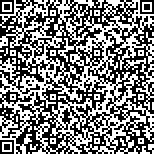| 摘要: |
| 研究分别从贸易历史、国际比较和模型模拟的视角对中国未来食物供求平衡状况进行了展望和模拟分析。(1)贸易历史的角度的经验结果显示,中国食物贸易净进口呈扩大态势; (2)中国大陆与日本、韩国及中国台湾地区的国际比较结果表明,中国未来粮食净进口可能会进一步扩大,尤其是对蛋白质来源食物需求可能会快速扩张; (3)基于中国食物供求局部均衡模型的模拟分析结果显示,中国谷物和油料作物供求平衡的缺口将不断扩大,主要谷物和油料作物的自给率将不断下降,同时,中国采取的玉米产业需求抑制政策对中国粮食供求平衡具有深远影响。综合以上不同视角的结果可以看出,要根本解决中国食物供求平衡问题,有必要建立食物安全与其他安全的综合安全观,实现4个方面的战略转变。即:第一,从重视确保数量向重视确保国内外资源战略转变,如签订粮食供给的政府间协议。第二,从重视总体粮食安全向重视主食安全、区域安全、运输安全(或航道安全)、流通和分配渠道安全、不同收入群体家庭食物安全转变。第三,从重视单一的食物安全向产业安全和质量安全转变。第四,从重视本国食物安全向全球视角转变。 |
| 关键词: 中国食物供求 贸易历史 国际比较 局部均衡模型 |
| DOI:10.7621/cjarrp.1005-9121.20160704 |
| 分类号: |
| 基金项目: |
|
| FOOD SUPPLY-DEMAND PROJECTIONS IN CHINA: AN ANALYSIS OF INTEGRATING THE PERSPECTIVES OF FOOD TRADE HISTORY, INTERNATIONAL COMPARISON AND A PARTIAL EQUILIBRIUM MODEL SIMULATION |
|
Chen Yongfu1, Han Xinru2, Zhu Tiehui3, Chien Hsiaoping4, Cai Xin1, Zhu Wenbo1
|
|
1.College of Economics and Management,China Agricultural University,Beijing 100081,China;2.Institute of Agricultural Economics and Development,CAAS,Beijing 100081,China;3.State Agriculture Comprehensive Development Office,Ministry of Finance,Beijing 100820,China;4.Japan International Research Center for Agricultural Sciences,Tsukuba 305-8686,Japan
|
| Abstract: |
| This paper revealed China′s food balance of supply and demand in the future from the aspects of food trade history, international comparison on food demand and intake as well as a partial equilibrium model simulation. Results from the analysis of food trade history showed that the net imports of China′s grain was an increasing trend. Based on the international comparison among China Mainland, Japan, South Korea and China Taiwan, the increase of China′s net imports of food has become an inevitable trend, and the demand for protein food may be further expanded. Results from a partial equilibrium simulation showed that the gap of supply and demand balance of China′s grain and oilseed will continue to expand, the self-sufficiency rates will continue to decline, and the probability of expanding net imports of corn or its substitutes was very high. The corn demand restriction policy had a great influence on China′s food balance. To solve above problems, it was necessary to implement strategy in the following four aspects. First, the strategy should be shifted from the valuing food quantity safety to ensuring both domestic and foreign resources, such as signing food supply agreements among governments; second, the strategy should be shifted from paying attention to the overall food security to the staple food security, regional security, transport security (or security channel), distribution channel security and food security of different household income groups; third, the strategy should be shifted from focusing on food security to a more comprehensive industrial safety and quality safety; Finally, the strategy should be shifted from domestic food security to a global perspective. |
| Key words: China food supply and demand trade history international comparison simulation forecast |

